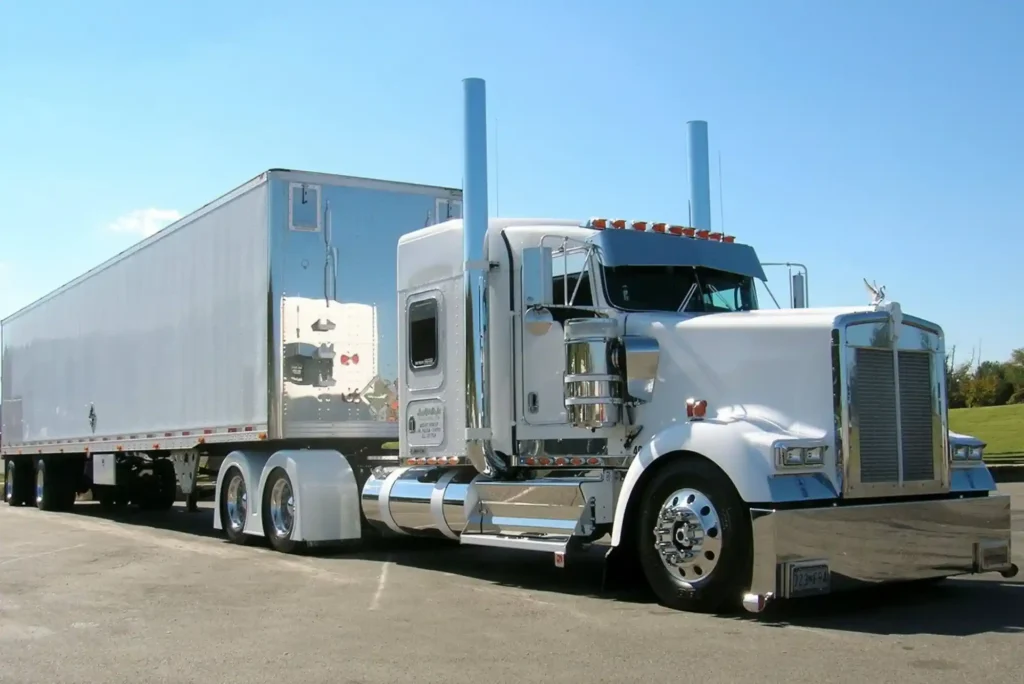The weight of a semi truck is a critical factor in the transportation industry, affecting safety, regulatory compliance, and operational efficiency. Knowing how to measure the weight of a semi truck accurately is essential for drivers, fleet managers, and regulatory bodies. This article explores the components influencing the weight, methods for determining it, and the regulatory framework governing truck weights in the United States.
Factors Influencing the Weight of a Semi Truck
The total weight of a semi-truck consists of several elements, including the truck’s empty weight, the weight of the cargo, and any additional equipment. Here are the primary factors:
- Empty truck weight: This is the weight of the truck without cargo, passengers, or fuel. It includes the weight of the engine, chassis, cab, and other integral parts of the vehicle.
- Cargo weight: This varies significantly based on the type of goods transported, ranging from heavy machinery to lightweight consumer products.
- Axle configuration: The number and placement of axles determine how the weight is distributed, which impacts the allowable weight limits.
- Additional equipment: Modifications like cranes, auxiliary fuel tanks, or specialized tools increase the overall weight of the vehicle.
Empty Truck Weight (Curb Weight)
The empty weight, or curb weight, of a semi-truck refers to its weight when it is not carrying any cargo or passengers and has minimal fuel. This includes the structural components such as the chassis, engine, axles, and cab. For instance, heavier-duty trucks designed to transport large loads often have sturdier builds, which inherently increases their curb weight. Additionally, trucks equipped with larger engines or more robust suspension systems typically weigh more even before any cargo is added.
Cargo Weight
The weight of the cargo a truck carries significantly impacts its total weight. Different types of goods have varying densities and weights. For example, transporting dense materials like steel beams or construction equipment will result in a much heavier load compared to lightweight goods like textiles or electronics. Moreover, the way the cargo is loaded and distributed also affects the truck’s total weight and balance. Uneven or improperly secured cargo can lead to weight imbalances, making it difficult to control the truck and increasing the risk of accidents.
Axle Configuration
The number and arrangement of axles on a semi-truck determine how the weight is distributed across the vehicle. Trucks with more axles can distribute weight more effectively, allowing them to carry heavier loads without exceeding weight limits for individual axles. For example, a tandem axle configuration can support up to 34,000 pounds, while a single axle is limited to 20,000 pounds. This distribution is essential not only for meeting regulatory requirements but also for ensuring the truck operates safely and efficiently.
Additional Equipment and Modifications
Many semi trucks are customized with additional equipment to suit specific operational needs, which can increase their overall weight. Examples include auxiliary fuel tanks, refrigeration units for transporting perishable goods, and hydraulic systems for specialized tasks. While these modifications improve functionality, they also add significant weight to the vehicle. Fleet operators must account for this added weight when determining how much cargo the truck can legally and safely carry.
Fuel Load
Fuel can be a surprisingly significant contributor to a truck’s overall weight. A fully loaded fuel tank in a semi truck can weigh several hundred pounds, depending on the size of the tank and the type of fuel used. Operators often need to consider the trade-off between carrying a full fuel load and maximizing cargo weight. Additionally, the weight of the fuel decreases as it is consumed during the journey, altering the truck’s overall weight dynamically.
Tire and Wheel Configurations
The size and type of tires and wheels used on a semi truck can also influence its weight. Larger, heavy-duty tires designed for specific terrains or loads may weigh more than standard options. Similarly, aluminum wheels are often used as a lighter alternative to steel wheels to help reduce overall weight without compromising strength.
Seasonal and Environmental Factors
Seasonal equipment, such as snow chains used during winter, can add extra weight to a semi truck. Furthermore, environmental conditions, like rain or snow, can cause a slight increase in weight due to water absorption by the truck’s exterior or cargo if it is not adequately protected.

Methods to Determine the Weight of a Semi Truck
Various tools and techniques are used in the United States to measure the weight of a semi truck. These range from manual systems to advanced technologies, ensuring precise measurements under different conditions.
Roadside Weigh Stations
Weigh stations are facilities located along highways and interstates where semi trucks are inspected for weight compliance. These stations use either static or dynamic scales.
- Static scales: Trucks must stop completely on these scales to get an accurate reading of their weight.
- Dynamic scales: These allow the truck to be weighed while moving, improving efficiency and reducing traffic delays.
Portable Weighing Systems
Portable scales are convenient tools for drivers and transport companies. They consist of lightweight platforms placed under the truck’s wheels, providing quick and accurate weight measurements.
Onboard Weight Sensors
Modern semi trucks are often equipped with onboard sensors that measure weight in real time. Typically installed on the axles, these sensors offer continuous monitoring, ensuring compliance throughout the journey.
Weight Regulations in the United States
Federal and state regulations govern the maximum allowable weight for semi trucks to ensure road safety and infrastructure protection. These limits depend on the truck’s axle configuration and total weight.
Maximum Weight Limits by Axle Configuration
| Axle Configuration | Maximum Allowed Weight (lbs) |
|---|---|
| Single Axle | 20,000 |
| Tandem Axle | 34,000 |
| Gross Vehicle Weight (GVW) | 80,000 |
Most states adhere to the federal limit of 80,000 pounds for the gross vehicle weight unless exceptions are granted for specific scenarios, such as special permits.
Importance of Accurate Weight Measurement
Accurately determining the weight of a semi-truck is crucial for multiple reasons:
- Regulatory compliance: Overloaded trucks face hefty fines and penalties for violating weight limits.
- Road safety: Proper weight distribution ensures that the truck remains stable, reducing the risk of accidents.
- Operational efficiency: Maintaining weight within permissible limits improves fuel efficiency and reduces wear and tear on the vehicle.
- Infrastructure protection: Overloaded trucks can damage roads and bridges, leading to costly repairs and increased maintenance requirements.

Practical Tips for Drivers
Drivers and fleet operators can adopt several best practices to manage weight effectively:
- Regularly use weigh stations or portable scales before starting a trip to ensure compliance.
- Distribute the cargo evenly to prevent excessive strain on specific axles.
- Train drivers on weight regulations and load management to avoid potential issues during inspections.
Determining the weight of a semi-truck is an integral part of the transportation process in the United States. From ensuring regulatory compliance to promoting safety and efficiency, accurate weight measurement benefits all stakeholders in the trucking industry. By leveraging modern technologies and adhering to best practices, drivers and fleet managers can navigate these requirements confidently, minimizing risks and maximizing productivity.



